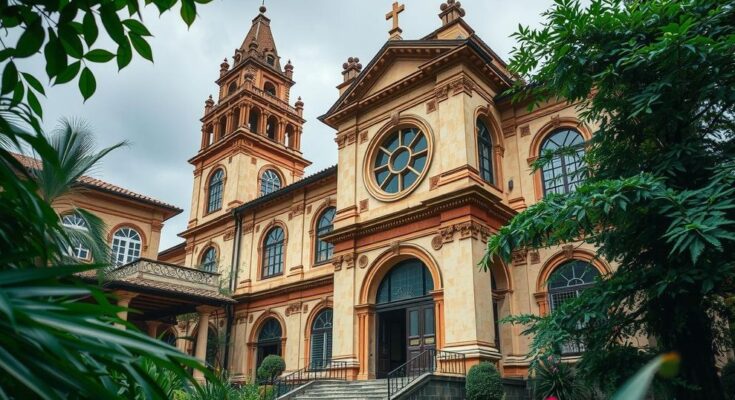In a celebration of cultural heritage, the government’s cultural agency has designated three Spanish-era churches in Rizal province as national cultural treasures (NCTs). These newly recognised sites include Sta. Ursula Parish Church in Binangonan, the Diocesan Shrine and Parish of St. Joseph in Baras, and St. James Parish Church in Morong, alongside their significant complexes and ecclesiastical artefacts. The Antipolo diocese now boasts four NCTs, adding to the notable San Ildefonso de Toledo Church in Tanay, recognised in 2001.
The Binangonan Church, with roots tracing back to the 18th century, showcases remarkable retablos, landmark examples of the 18th and 19th-century retablo styles. Established as a parish by the Franciscans in 1621, administrative oversight oscillated between different religious orders, with the Franciscans resuming care in 1737. A formal announcement declaring it as a national cultural treasure is scheduled for March 2.
In Baras, the Baras Church stands proud as the oldest Josephian parish on the southern Tagalog mainland. Its origins stretch back to 1595 when Franciscan missionaries built it. After relocations over the years, the current structure, completed in 1686, embodies Baroque artistry, showcasing retablos that resonate with the Philippine context. A formal recognition event for this church will be held on March 9.
Morong Church, constructed in 1615 after a devastating fire, reflects an architectural evolution, dedicated to St. James and completed in 1620. Its design remained intact until the 1850s, prompting renovations by the Franciscan Fr. Maximo Rico led by local craftsman Bartolome Palatino. Together, these three churches exemplify cultural integrity and rich artistic influences, blending European, Ibero-American, and Asian styles in their ecclesiastical treasures.
Three Spanish-era churches in Rizal province, namely Sta. Ursula Parish Church, the Diocesan Shrine and Parish of St. Joseph, and St. James Parish Church, have been designated as national cultural treasures. This recognition adds to the cultural significance of the Antipolo diocese, highlighting its historical churches, particularly those originating from the 17th and 18th centuries. Formal declarations for Binangonan and Baras Churches are set for March 2 and 9, respectively.
The recent designation of Binangonan, Baras, and Morong Churches as national cultural treasures highlights the importance of preserving historical and cultural heritage in the Philippines. These churches not only reflect the artistic ingenuity of their time but also serve as a testament to the rich tapestry of Philippine history, inviting visitors to appreciate their unique stories and architectures. As the formal declarations approach, these ecclesiastical sites will surely gain recognition and reverence from both locals and tourists alike.
Original Source: interaksyon.philstar.com



